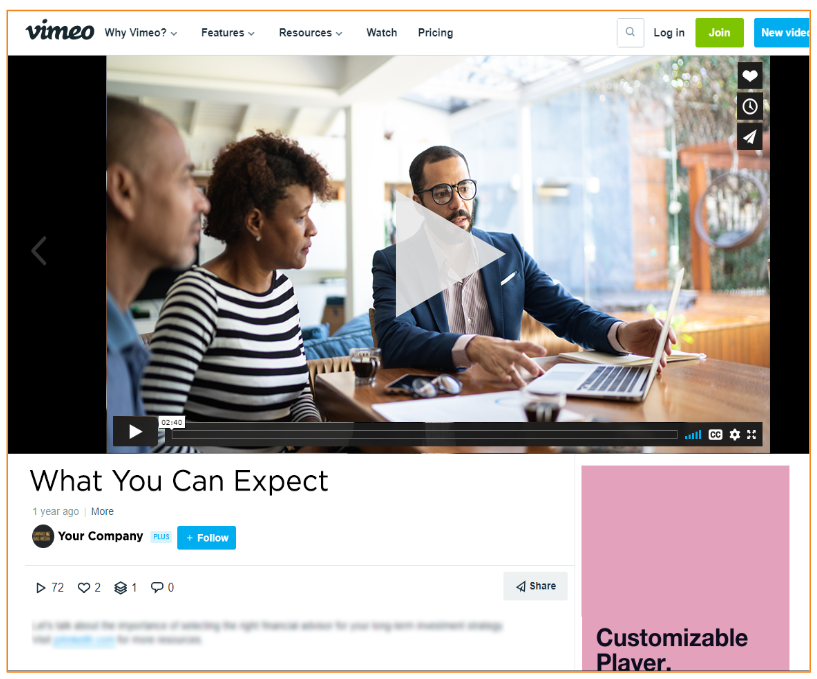Purposes of Content
In this module, you will learn the different purposes your content can serve and know when to apply them.
In this module, you will learn the different purposes your content can serve and know when to apply them.
When creating content, you want to start with the end purpose in mind: What are you trying to accomplish? Without a clear goal, your content may miss the mark.
There are nine purposes of content:
Establish credibility
Optimize for search engines
Generate leads
Nurture relationships
Show behind the scenes of your business
Highlight the client experience
Change mindset
Build general awareness
Address objections
Let’s look at these in more detail.

The first purpose of content is to build credibility to establish yourself as an expert with your niche. Anytime you're creating credibility content, you should be highlighting your knowledge and expertise. You should be wowing your niche so that they know you solve the problems of people just like them.
For example, a credibility blog topic would be “4 Ways to Structure the Sale of Your Business.”
Examples of credibility content are:
Blogs
Ebooks
White papers
Videos
Podcasts
Books

The purpose of SEO content is to drive traffic to your website when someone uses a search engine such as Google to search for a specific keyword or phrase.
For example, if you want to try to show up on the first page of Google for the term “San Diego certified divorce financial analyst,” you may write a blog on “What Is a Certified Divorce Financial Analyst and How Can You Find One in San Diego?” When you are writing specifically to optimize a page for search engines, the content may not be as compelling as when you write from a pure credibility standpoint.
Examples of search engine optimization content are:
Blogs

The purpose of lead generation content is to capture email addresses or other contact information from a prospect in order to market to them in the future. Usually, prospects must fill out a form to gain access to the content.
Examples of lead generation content are:
Downloadable guides
Ebooks
Live webinars
Recorded, on-demand webinars
Live events
Relationship nurturing content helps you stay top of mind with prospects, clients, and centers of influence. A newsletter is a good example of relationship-nurturing content because it goes out to your existing contacts on a regular basis. Most financial advisors who don’t specialize in a niche use content for this purpose all the time, using canned content to send periodic newsletters.
Examples of relationship nurturing content are:

Behind-the-scenes content is usually visual, such as videos or photos. For example, you could post a photo to your social media account of your employees volunteering together to showcase your company culture. Or you could post a photo of you speaking at a conference for your niche. This type of content helps clients, prospects, and centers of influence see beyond your marketing message and discover who you are as a firm.
Examples of behind-the-scenes content are:
Videos
Photos

The next category is highlighting the client experience. What can a prospect expect when working with you? There are many ways you can answer this question. One example would be to develop a video that talks about your process and what prospects can expect. Another example would be having a current client provide a testimonial about their experience in working with your firm. Or you could write a case study and publish it on your website.
Examples of client experience content are:
Videos
Testimonials
Case studies

The next content category is mindset. This is your opportunity to help a prospective client change the way they think about their money and will often come in the form of a blog, video, or podcast. For example, perhaps you have a blog on “Why You Won’t Sell Your Business for as Much as You Think.” In this case, you would be trying to shift the mindset with business owners that they are going to be able to sell their business for a ton of money and therefore don’t need to do any additional retirement planning. You could make the argument that they may be forced to sell, such as during a recession, and may not get a sale price that will support their dream retirement.
Examples of mindset content are:
Blogs
Videos
Podcasts

Awareness is our next category of content. The sole purpose is to create content that builds awareness about your business with prospects. We often see content like this in the form of billboards or advertisements, if you can really even call that content. You are basically just trying to get your name out there.
Examples of awareness content are:
Ads
Billboards

Finally, the last purpose is about using content to overcome objections in the sales process. A really good example of this would be a blog on why someone should hire a financial advisor instead of doing it themselves. Or why they should pay for an ongoing relationship with a financial advisor instead of one-time hourly advice. This type of content is your opportunity to proactively address common objections or concerns you hear from prospects in the sales process.
Examples of objection content are:
Blogs
Videos
Podcasts